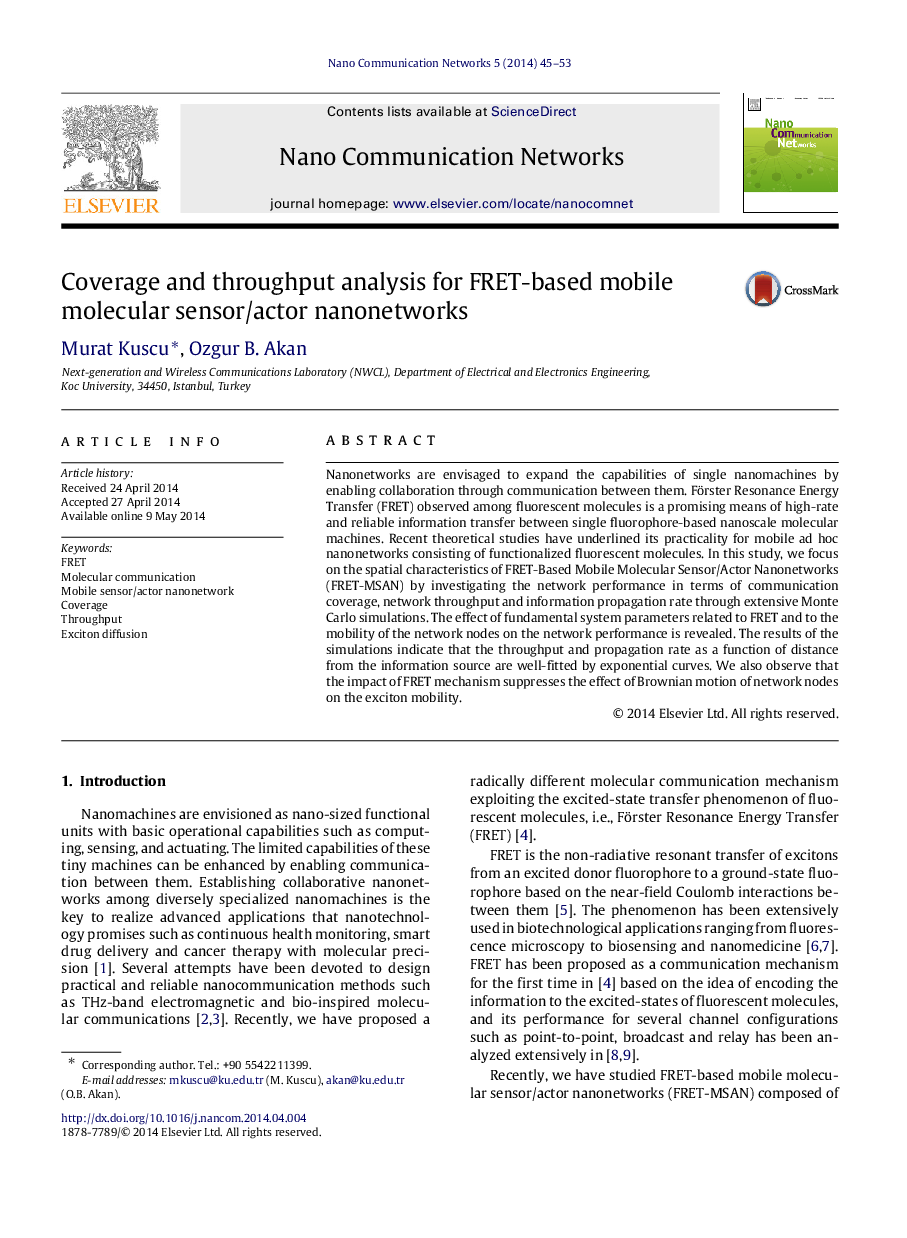| Article ID | Journal | Published Year | Pages | File Type |
|---|---|---|---|---|
| 464107 | Nano Communication Networks | 2014 | 9 Pages |
Nanonetworks are envisaged to expand the capabilities of single nanomachines by enabling collaboration through communication between them. Förster Resonance Energy Transfer (FRET) observed among fluorescent molecules is a promising means of high-rate and reliable information transfer between single fluorophore-based nanoscale molecular machines. Recent theoretical studies have underlined its practicality for mobile ad hoc nanonetworks consisting of functionalized fluorescent molecules. In this study, we focus on the spatial characteristics of FRET-Based Mobile Molecular Sensor/Actor Nanonetworks (FRET-MSAN) by investigating the network performance in terms of communication coverage, network throughput and information propagation rate through extensive Monte Carlo simulations. The effect of fundamental system parameters related to FRET and to the mobility of the network nodes on the network performance is revealed. The results of the simulations indicate that the throughput and propagation rate as a function of distance from the information source are well-fitted by exponential curves. We also observe that the impact of FRET mechanism suppresses the effect of Brownian motion of network nodes on the exciton mobility.
